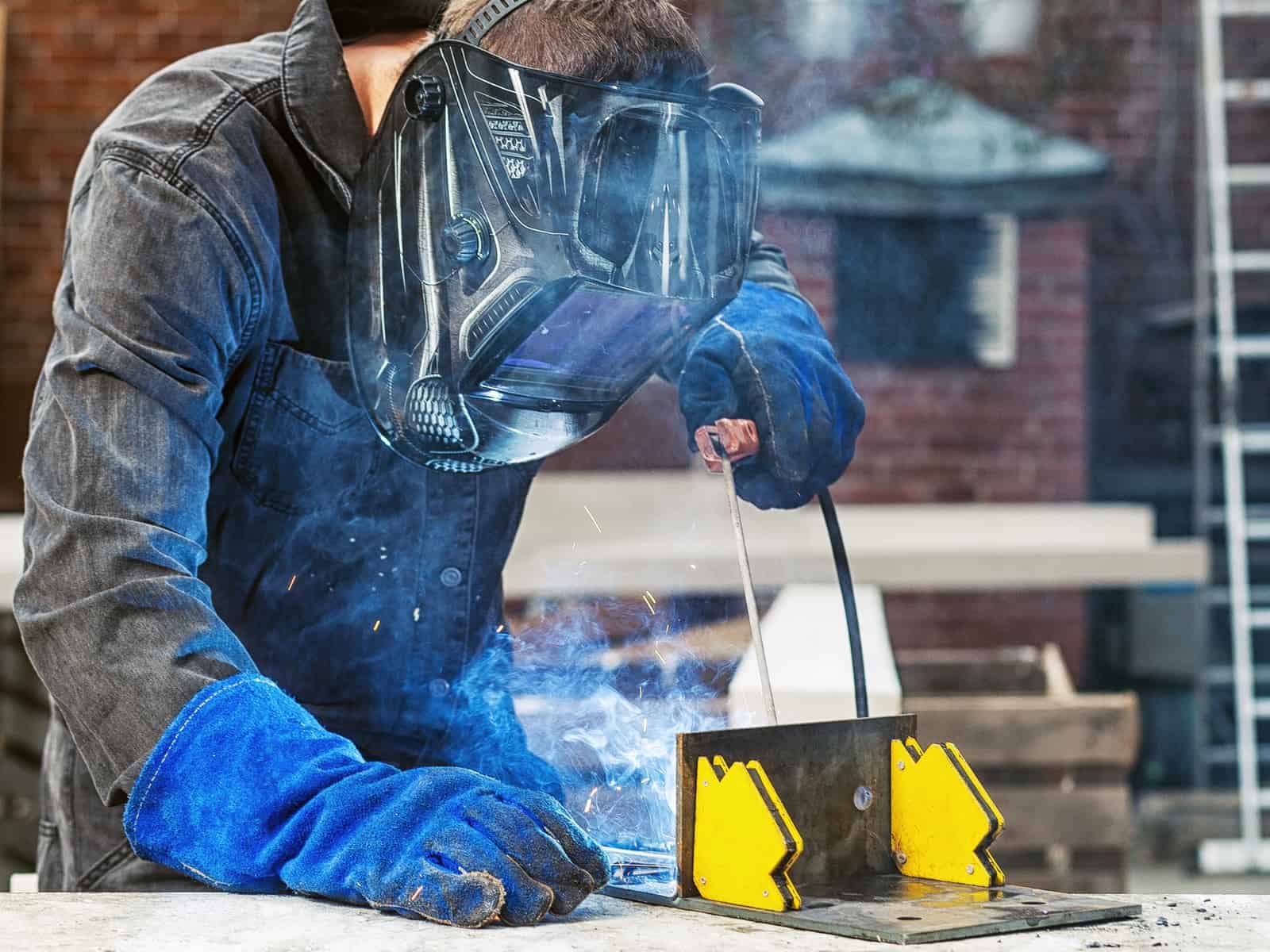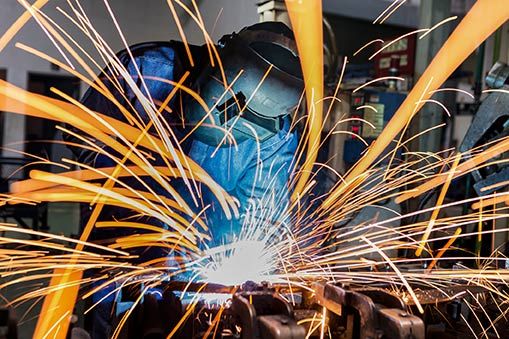Typical Welding Repair Service Issues and How to Address Them Properly
Welding fixings frequently come across a series of issues that can jeopardize the stability of the last product. Usual troubles consist of poor penetration, porosity, and misalignment, amongst others. Each defect presents special obstacles that call for particular methods for resolution. Recognizing these issues is vital for welders aiming to enhance their end results and abilities. This discussion will discover these usual welding fixing problems and efficient methods to address them.
Insufficient Penetration
Inadequate infiltration happens when the weld metal stops working to completely fuse with the base material, leading to weak joints and possible architectural failings. This problem usually comes from inadequate heat input, wrong electrode angle, or incorrect welding rate. Welders might come across inadequate infiltration due to a mistake of the needed specifications for a details material density or type. Furthermore, contamination on the base product's surface area can impede reliable bonding, intensifying the trouble. To resolve insufficient infiltration, welders ought to ensure ideal setups on their tools and maintain a clean job surface. Regular inspection of welds is suggested to determine any kind of deficiencies early, enabling timely improvements and the avoidance of endangered structural honesty in welded assemblies.
Porosity
Porosity is a typical problem in bonded joints that shows up as tiny gas bubbles trapped within the weld metal. This defect can jeopardize the stability of the weld, causing minimized stamina and prospective failing under tension. Montana Mobile Welding and Repair Belgrade. Porosity usually emerges from contamination, dampness, or improper welding techniques, which allow gases to get away into the molten weld pool. To resolve porosity, welders should guarantee correct surface prep work, keep a clean workplace, and utilize ideal welding specifications. Additionally, selecting the best filler product and protecting gas can minimize gas entrapment. Routine inspection and screening of welds can assist recognize porosity early, assuring timely corrective actions are taken, therefore maintaining the top quality and integrity of the bonded structure
Imbalance
Misalignment in welding can emerge from numerous aspects, consisting of inappropriate setup and thermal development. Comprehending the origin is important for effective resolution. Numerous adjustment methods are available to straighten components and assure structural stability.
Reasons of Imbalance
Welding misalignment frequently comes from a range of underlying problems that can endanger structural integrity. One main reason is incorrect fit-up of parts before welding, which can cause gaps and irregular surface areas. Variations in thermal expansion throughout the welding process can additionally cause distortion, specifically if the products being signed up with have different coefficients of growth. Furthermore, inadequate securing and fixturing may fail to hold elements securely in area, bring about movement during welding. Inadequately kept devices, including welding makers and tools, might present variances in the weld bead, further adding to misalignment. Finally, driver mistake, coming from insufficient training or experience, can likewise play a substantial role in creating misaligned welds.
Modification Strategies Available
Addressing imbalance properly calls for a mix of corrective strategies customized to the details concerns handy. One typical approach is using jigs or components to hold components in the appropriate placement during welding, making sure constant placement. Additionally, pre-heating the products can aid lower distortion and improve fit-up. For substantial imbalance, mechanical realignment methods, such as making use of hydraulic jacks or clamps, can be utilized to remedy the placement before welding. Post-weld warm treatment might also be essential to soothe anxieties brought on by misalignment. Cautious assessment and adjustment throughout the configuration phase can prevent imbalance concerns from ending up being significant problems, promoting a smoother welding procedure and boosting general structural honesty.
Distortion
Distortion is a common challenge in welding that can develop from numerous factors, consisting of unequal heating & cooling. Recognizing the sources of distortion is crucial for carrying out reliable prevention techniques. Addressing this issue not just enhances structural honesty however also boosts the total top quality of the weld.
Reasons of Distortion
When based on the intense heat of welding, products typically undergo changes that can lead to distortion. This phenomenon mostly develops from thermal expansion and contraction throughout the welding process. As the weld area heats up, the material expands; upon cooling, it contracts, which can produce interior stress and anxieties. Furthermore, uneven heating across a workpiece can worsen these anxieties, leading to bending or bending. The sort of product also plays a significant role; metals with varying thermal conductivity and coefficients of growth might react in a different way, resulting in unforeseeable distortions. Moreover, bad joint design and insufficient fixturing can add to imbalance throughout welding, enhancing the likelihood of distortion. Understanding these reasons is vital for reliable welding repair and avoidance techniques.
Prevention Techniques
Reliable prevention methods for distortion during welding focus on controlling warm input and making sure appropriate joint design. Keeping a consistent heat input assists to minimize thermal growth and tightening, which can result in distortion. Utilizing techniques such as pre-heating the workpiece can likewise lower the temperature slope, advertising uniform home heating. In addition, selecting appropriate joint layouts, such as T-joints or lap joints, can enhance stability and minimize anxiety concentrations. Applying proper fixturing to safeguard the workpieces in position further aids in keeping placement during the welding procedure. Staggered welding sequences can distribute warmth much more equally, avoiding localized distortion. By using these approaches, welders can substantially decrease the chance of distortion and boost the total top quality of their welds.
Splitting
Cracking is an usual issue encountered in welding repair services, typically arising from various factors such as improper air conditioning rates, product selection, or inadequate joint preparation. The event of fractures can substantially endanger the honesty of the weld, causing possible failings during operation. To address this problem, welders must first evaluate the root causes, ensuring that products work and suitably selected for the particular application. In addition, regulating the cooling rate during the welding process is essential; rapid air conditioning can cause anxiety and result in navigate to this site breaking. Proper joint style and prep work likewise add to lessening the danger. Carrying out these methods can improve weld Get the facts top quality and toughness, ultimately reducing the possibility of breaking in completed weldments.

Insufficient Fusion
A significant problem in welding repairs is incomplete combination, which takes place when the weld metal does not effectively bond with the base material or previous weld passes - Montana Mobile Welding and Repair. This defect can result in weaknesses in the joint, potentially jeopardizing the honesty of the bonded framework. Aspects adding to incomplete fusion include not enough warmth input, improper welding method, and contamination of the surface areas being joined. To resolve this concern efficiently, welders need to assure correct pre-weld cleaning and surface area preparation, as well as change their welding specifications to accomplish adequate infiltration and combination. Regular inspection throughout the welding procedure can also assist determine incomplete blend early, permitting timely restorative actions to boost the total quality of the weld
Overheating
While welding repair work can enhance architectural integrity, overheating provides a significant difficulty that can cause product degradation. Extreme warm during welding can alter the mechanical residential or commercial properties of metals, causing lowered toughness, boosted brittleness, and bending. This phenomenon is particularly critical in high-stress applications where structural reliability is vital. Recognizing getting too hot can entail visual evaluations for staining or distortion, in addition to keeping track of temperature throughout the welding process. To alleviate the dangers related to overheating, welders should use appropriate methods, such as regulating warm input, changing travel rate, and making use of appropriate filler materials. In addition, executing pre- and post-weld warmth therapies can aid bring back product residential or commercial properties and improve the total quality of the repair work, guaranteeing long-lasting efficiency and safety and security.
Often Asked Concerns
What Are the Typical Signs of a Welding Issue?

How Can I Check My Welds for Quality?
To evaluate welds for high quality, one can use aesthetic inspections, ultrasonic testing, and radiographic methods. Each strategy ensures structural honesty, recognizes flaws, and verifies adherence to specified criteria, eventually improving the reliability of the bonded joints.
What Security Preventative Measures Should I Take While Welding?
When welding, one should prioritize safety by putting on go to these guys proper personal safety devices, making sure proper air flow, protecting flammable materials away, keeping a clean workspace, and being mindful of environments to stop mishaps and injuries.
Can I Fix a Weld Without Renovating the Entire Joint?
Fixing a weld without remodeling the entire joint is possible, depending upon the damage (Montana Mobile Welding and Repair Fabrication). Techniques such as grinding, adding filler product, or utilizing a welding process can effectively resolve certain imperfections while preserving the surrounding framework
What Tools Are Essential for Efficient Welding Repairs?
Important devices for reliable welding repair services include a welding equipment, wire brush, grinder, protective gear, clamps, and filler materials. Each tool plays a crucial role in making certain top quality and security throughout the repair service process. Porosity typically occurs from contamination, moisture, or improper welding methods, which permit gases to escape into the molten weld pool. Badly maintained devices, including welding equipments and tools, might introduce inconsistencies in the weld bead, more contributing to misalignment. When subjected to the intense warm of welding, products often go through adjustments that can lead to distortion. Cracking is a common issue come across in welding fixings, commonly resulting from different aspects such as inappropriate cooling prices, product option, or poor joint prep work. A considerable issue in welding repairs is incomplete fusion, which happens when the weld metal does not adequately bond with the base product or previous weld passes.